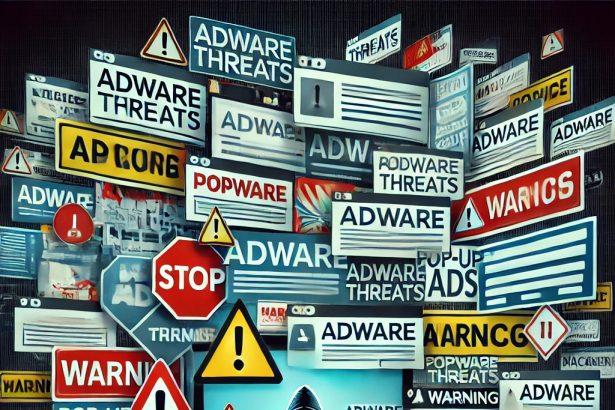Online scams are evolving rapidly, and one of the most deceptive forms comes in the shape of fake system alerts and permission requests. A rising example of such manipulation is the rogue domain lightspeedcon.co.in, which tricks users into enabling spammy push notifications through false CAPTCHAs and clickbait prompts. While it may appear harmless on the surface, this site is part of a broader adware network that aims to redirect users to fraudulent, phishing, and sometimes even malware-laced websites.
Threat Summary
| Category | Details |
|---|---|
| Threat Name | Ads by lightspeedcon.co.in |
| Threat Type | Push notification ads, pop-up ads, unwanted ads |
| Detection Names | Seclookup (Malicious), Sophos (Spam), Multiple engines (VirusTotal) |
| Serving IP Address | 108.62.60.42 |
| Distribution Methods | Fake CAPTCHA verification, deceptive pop-ups, bundled adware |
| Associated Emails | Not publicly listed |
| Symptoms of Infection | Intrusive pop-up ads, browser redirections, decreased system performance |
| Damage | Browser hijacking, personal data leaks, potential malware infections |
| Danger Level | High – due to phishing and malware risks |
What is lightspeedcon.co.in?
Lightspeedcon.co.in is not a legitimate or trustworthy website. Its main objective is to generate profit for its operators by tricking users into granting notification permissions, which are then exploited to deliver intrusive and misleading ads. Once users click the “Allow” button—believing they’re confirming a CAPTCHA—this site begins to bombard their screens with deceptive advertisements. These ads can appear even when the browser is closed, creating a persistent and annoying experience.
These push notifications often contain:
- Fake system alerts
- Bogus lottery and giveaway announcements
- Tech support scams
- Fake antivirus alerts
- Suspicious software promotions
Clicking any of these could lead to malware infection, identity theft, or financial loss.
The Tactics Used by lightspeedcon.co.in
The hallmark of lightspeedcon.co.in’s deception lies in its manipulative use of fake CAPTCHA checks. This creates a false sense of legitimacy, prompting users to click “Allow” to verify they are not bots. However, doing so gives the site free rein to flood the device with disruptive messages.
These notifications are designed to grab attention and trick users into clicking out of curiosity or fear. Once clicked, users are often led to:
- Phishing websites asking for personal or financial information
- Pages promoting potentially unwanted programs (PUPs) or malware
- Scam pages offering fake tech support or prize winnings
Some users may even unknowingly subscribe to recurring payments or download malicious executables.
Why lightspeedcon.co.in Is Dangerous
Allowing notifications from lightspeedcon.co.in not only compromises your browsing experience but also jeopardizes your privacy and system security. These ads are not just annoying—they are strategically crafted to deceive.
Whether it’s a fake “you’ve won a prize” message or a fraudulent warning about your system being infected, these notifications are a gateway to cyber threats. Many victims have reported ending up on scam pages or being prompted to install suspicious browser extensions and applications.
Manual Adware Removal Process (Windows & Mac)
Step 1: Identify and Uninstall Suspicious Applications
For Windows Users
- Open Task Manager by pressing
Ctrl + Shift + Esc. - Navigate to the “Processes” tab and search for unknown or high-resource-consuming processes.
- If you detect anything suspicious, right-click and select “End Task.”
- Go to
Control Panel>Programs>Programs and Features. - Locate and uninstall any unfamiliar programs.
For Mac Users
- Open
Finderand click onApplications. - Identify and move any suspicious applications to the
Trash. - Empty the
Trash. - Check
System Preferences>Users & Groups>Login Itemsfor unknown startup programs and remove them.
Step 2: Remove Malicious Browser Extensions
Google Chrome
- Open Chrome, click
Menu(three dots) >Extensions. - Locate and remove unknown extensions.
- Reset Chrome:
Settings>Reset settings> “Restore settings to their original defaults.”
Mozilla Firefox
- Click
Menu>Add-ons and themes. - Remove suspicious extensions.
- Reset Firefox:
Help>More troubleshooting information> “Refresh Firefox.”
Safari (Mac)
- Open Safari, go to
Preferences>Extensions. - Delete unknown extensions.
- Reset Safari:
History> “Clear History.”
Microsoft Edge
- Click
Menu>Extensions. - Remove any unfamiliar extensions.
- Reset Edge:
Settings>Reset settings> “Restore settings to their default values.”
Step 3: Delete Adware-Associated Files and Folders
For Windows Users
- Press
Win + R, type%AppData%, and press Enter. - Locate and delete suspicious folders.
- Repeat for
%LocalAppData%,%ProgramData%, and%Temp%.
For Mac Users
- Open Finder and press
Shift + Command + G, then enter~/Library/Application Support/. - Remove any suspicious folders.
- Repeat for
~/Library/LaunchAgents/,~/Library/LaunchDaemons/, and~/Library/Preferences/.
Step 4: Flush DNS Cache to Remove Adware Traces
For Windows Users
- Open
Command Promptas Administrator. - Type
ipconfig /flushdnsand press Enter.
For Mac Users
- Open
Terminal. - Enter
sudo killall -HUP mDNSResponderand press Enter.
Step 5: Restart Your System
Perform a reboot to apply the changes and ensure the removal process is complete.
Automatic Adware Removal Using SpyHunter (Windows & Mac)
For an effortless and effective solution, use SpyHunter, a powerful anti-malware tool designed to detect and remove adware completely.
Step 1: Download SpyHunter
Click the link to download SpyHunter: Download SpyHunter Here.
Step 2: Install SpyHunter
Follow the installation guide based on your operating system:
For Windows Users
- Run the downloaded
.exefile. - Follow the installation instructions.
- Launch SpyHunter and allow it to update its malware database.
For Mac Users
- Open the downloaded
.dmgfile. - Drag and drop SpyHunter into
Applications. - Open SpyHunter and let it update its database.
Step 3: Scan and Remove Adware
- Open SpyHunter.
- Click
Start Scan. - Wait for the scan to complete.
- Click
Fix Threatsto remove detected malware.
Step 4: Restart Your Computer
After SpyHunter removes all threats, restart your system to ensure all adware components are fully removed.
Conclusion
Lightspeedcon.co.in is not a website to be trusted. Its entire framework is built on deception, manipulating users into enabling push notifications that promote scams, phishing, and malicious software. If you see messages from this site or others like it, do not interact, and revoke any permissions granted immediately through your browser settings.
Avoiding interaction with such domains is crucial to maintaining digital hygiene and protecting your devices and datafrom exploitation.




